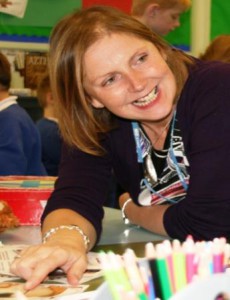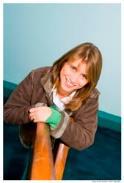‘Why … Why …Why’..?!’ It’s a plea many of us are all too familiar with, that pursuit for information, a thirst for knowledge from young children ….even those children who are non-verbal seek understanding, explanations, a curiosity in their eyes often matched with an earnestness and whilst young people may be hesitant in coming forward with their ‘why’s’ in the same way as a child, the uncertainty about the world is deep, the quest for facts, especially about health related issues spans the age continuum.
Information is power, and building health literacy skills of children and young people is something which deserves greater focus if we are to meet the ambitions of the Five Year Forward View so that society gains far greater control of their health and care. The Children and Young People’s Health Outcomes Forum reminds us there are over 15 million children and young people in England, making up 25% of the population, all have a need to develop health literacy skills to promote their wellbeing. Some of course have additional health needs, 6% of children and young people have a disability, 14% have a long standing illness, 10% have asthma, 66,000 have autism, 60,000 have epilepsy, 23,000 have diabetes and 68,840 are looked after children. Future in Mind the 2015 report of the Children and Young People’s Mental Health Taskforce highlights that over half of mental health problems in adult life (excluding dementia) start by the age of 14 and 75% by age 18. We also know that children and young people from Black and Minority Ethnic (BME) backgrounds report poorer experiences of care, as do children with learning disabilities and those with complex health needs. Critically 43% of children and young people in the recent Care Quality Commission Survey of Inpatient Care indicated that they were not as involved in decisions about their care as they would wish to be. It salient to remember we also have an estimated 700,000 young carers who are not only seeking to build their health literacy skills but also require these skills to advocate for those they care for.
These statistics confirm the diverse health literacy needs of children and young people, from universal health information to more specialist subject areas. High quality developmentally appropriate information that embraces the fact children and young people are digital natives’ demands attention, children and young people are after all the whole of our future population.
A recent meeting of the Patient Liaison Group of the BMA focussed on this issue this month, highlighting the need to give attention to empowering children and young people to be more involved in managing their own health (Dr Selwyn Hodge, Self-Care Forum) and the importance of improving their health literacy (Dr Joanne Protheroe, Chair of Health Literacy Group , UK). In response, the current President of the BMA, Sir Al Aysnley-Green, expressed his concern that children often get a poor deal in this country, and the emphasis needs to shift.
The discussions led us to recognise however we’re not starting from scratch; there are a number of ‘bright spots’ across the country that are worth reflecting on.
The Patient Information Forum, who tweet as @PiFonline wrote How to produce Health Information with and for Children and Young People, a guide which highlights a number of good examples from teams already addressing these challenges. It includes the work of Helen Sadler, a mum and primary school teacher who developed Monkey Wellbeing resources as a result of failing to find effective health literacy resources for her then 2 year old daughter in preparation for her surgery. The Monkey Wellbeing Resources bring health literacy to life for young children and embeds health information in schools linking it to the national curriculum in a fun and engaging way. The impact of the Monkey Wellbeing work has been evaluated by Liverpool John Moores University. There are now a range of story books available including Monkey has Asthma, Monkey has a blood test along with activity packs for use by children when visiting Emergency Departments that can be accessed, targeted at young children. You can follow them on twitter @MonkeyWellbeing
More recently we’ve seen the growth of digital badges, yes things have moved on from Brownie & Cub sew on badges! Digital Badges are a concept developed by Mozilla the Internet giant to recognise the informal learning that occurs day in and day out. MakeWaves is a secure online platform works with schools to bring digital badges to the classroom and whilst the ‘Will I am’ badge is their most popular, NHS badges have been developed to encourage schools to embed health discussions within the curriculum, sew on badges will never seem the same again, electronic backpacks at the ready! You can follow them at @Makewavestweets
There’s also an opportunity for appraisal of health information and evidence to be built into school lessons, these lesson plans developed by www.senseaboutscience.org and supported by www.evidentlycochrane.net assist in providing resources for teachers. @Students4BE is worth a follow on twitter too. Films of Young People’s Health Experiences too can be a great learning resource www.youthhealthtalk.org is a great site to visit and they tweet as @youthhealthtalk
It was children themselves in the CMO Report Our Children Deserve Better: Prevention Pays in chapter 4 who said that the link between health and education needs to be strengthened and there’s certainly a role for school governors in ensuring health within schools receives focused attention, this guidance from the Children’s Outcomes Forum explores their role in making this happen.
Youth advisory groups can be wonderful advocates for the need to improve health information for and with young people. The NHS England Youth forum, who tweet at @NHSYouthForum is a group of 25 young people recruited from a range of backgrounds from across England to challenge the NHS on its focus on the issues that matter to children and young people. They’ve recently developed posters on consent, confidentiality and feedback as these were areas that children, young people and families found difficult to understand. It’s a great example of young people identifying a need and then doing something about it by working in collaboration with those in the NHS, a discussion with Sir Bruce Keogh; Medical Director of NHS England about the content was a highlight for the young people developing these resources and they have now been disseminated nationally.
The Teenage Cancer Trust tweeting as @TeenageCancer have recently published ‘A Young Person’s Guide to Cancer’ based on what other young people have told them about what they wanted to know when they found out they had cancer. It’s a fabulously accessible resource covering ‘med stuff, heart stuff, life stuff, life beyond cancer and handy stuff’ that is really valued by the young people it’s targeted.
Healthcare professionals of course have an essential part in building health literacy of children and young people by involving them actively in consultations. The CYP Me First resources provide a range of tools to support health care professionals in building these skills. Programmes such as transition into adult services Ready, Steady, Go and Ask 3 questions can assist Health Care Professionals in bridging the information gap and really work to build health literacy in a practical way especially in the preparation for transfer from children and young people’s services in the adult world of health care.
These resources and examples shared here are far from exhaustive – there are indeed lots of ‘bright spots’ what we lack however is a national children and young people’s health literacy strategy that secures commitment from education and health in establishing strong foundations on which to build the capacity of children and young people to take control of their health and wellbeing. Of course strategies alone don’t change the world, mind-sets do, as healthcare professionals we can all play our part in making information accessible for and with children and young people, we can nurture their curiosity and encourage them to ask ‘Why..why…why…?’ perhaps can you do this with the next child or young person you care for?
Kath Evans, RGN, RSCN, MSc (Nursing), PG Dip (Education), BSc (Hons), PG Dip (Management) is Head of Patient Experience, Maternity, Newborn, Children & Young People at NHS England.
Email: [email protected] Twitter: @kathevans2

Joanne Protheroe, MB ChB, MRes, PhD, FRCGP is Senior Lecturer at Keele University, a GP Principle in Manchester and Chair of the Health Literacy Group UK
Email: [email protected]
